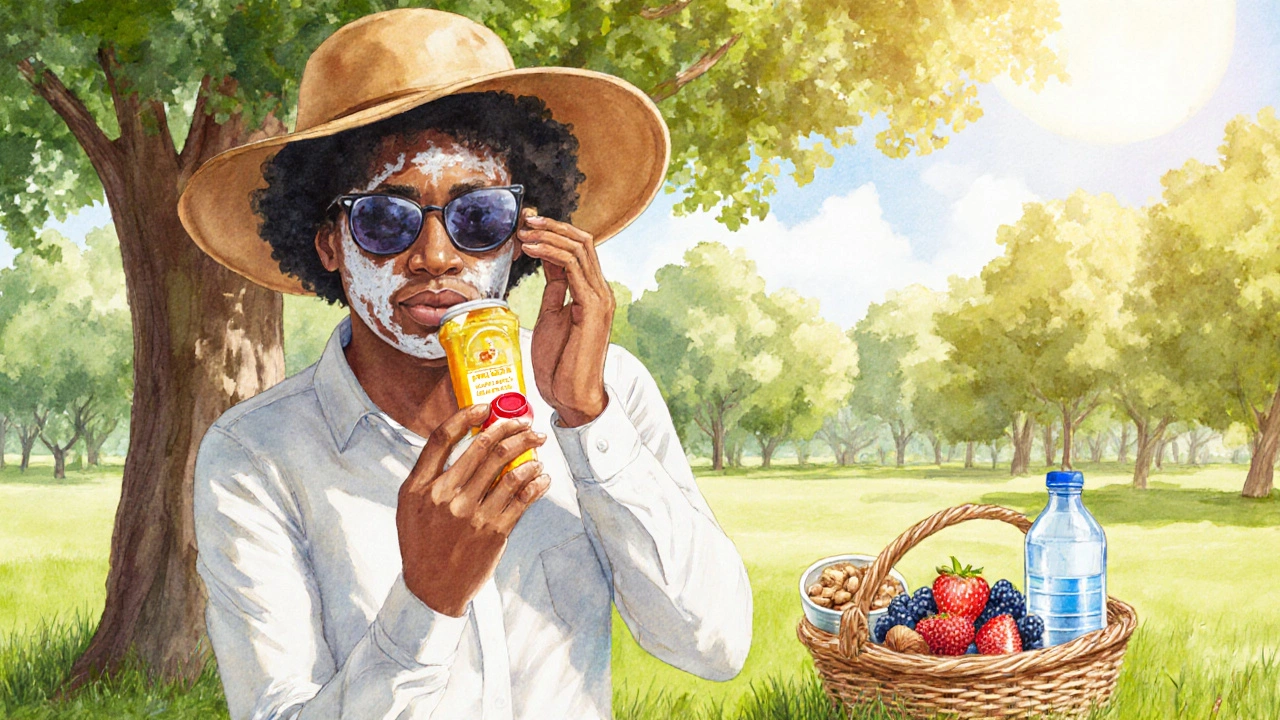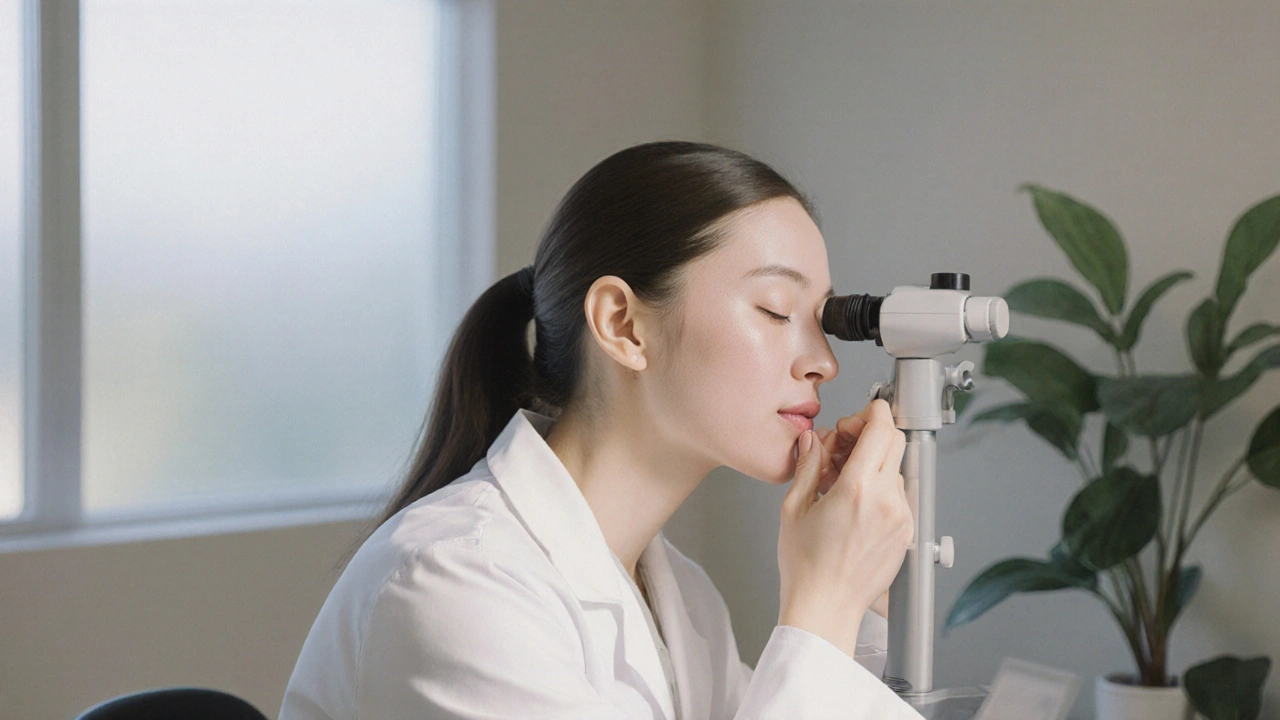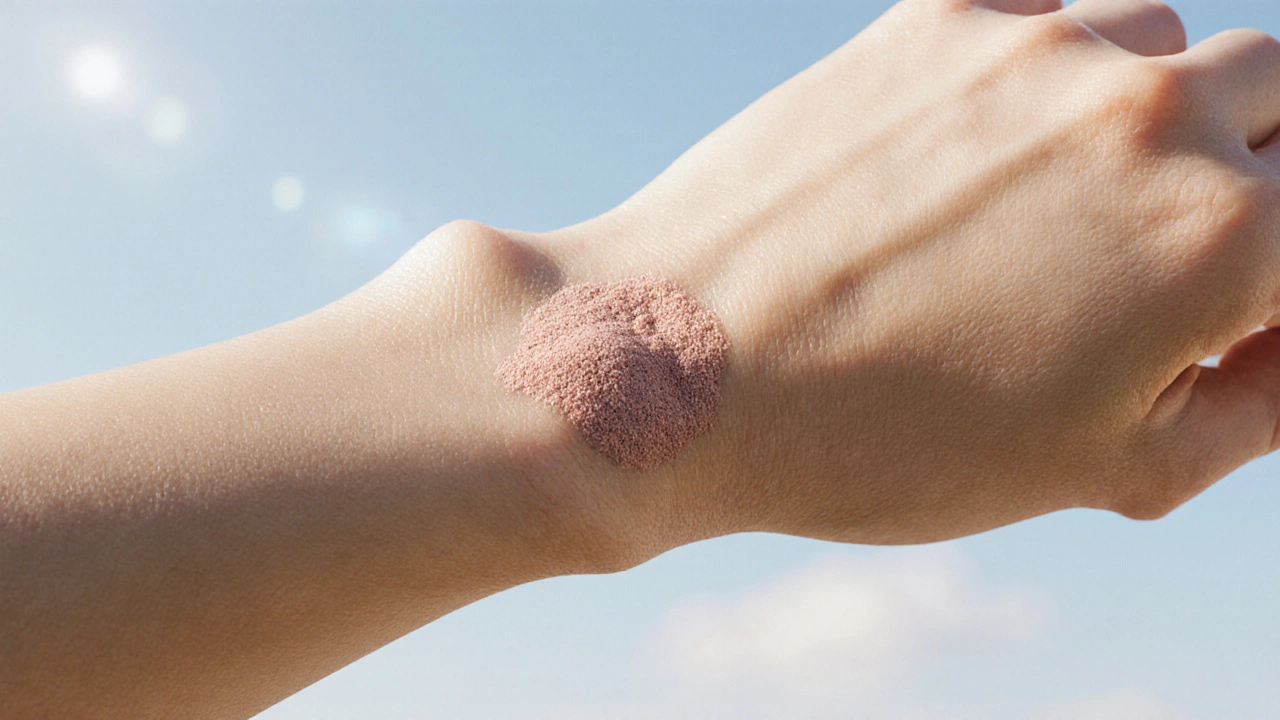Actinic Keratosis Prevention Quiz
Your Results
When it comes to actinic keratosis is a rough, scaly skin lesion caused by chronic exposure to ultraviolet (UV) radiation, catching it early can keep you from a potential skin cancer down the line. Most people think the sun only burns them in the summer, but even everyday exposure adds up, especially for fair‑skinned folks. Below you’ll find ten practical, down‑to‑earth ways to lower that risk and keep your skin looking healthy.
Key Takeaways
- Daily broad‑spectrum sunscreen is your first line of defense.
- Wear protective clothing and hats even on cloudy days.
- Limit midday sun and seek shade whenever possible.
- Avoid tanning beds - they’re a shortcut to skin damage.
- Regular skin checks with a dermatologist catch early lesions.
Why Actinic Keratosis Matters
Although most actinic keratoses (AKs) stay harmless, about 1% can evolve into squamous cell carcinoma, a type of skin cancer that can spread if left untreated. The good news? AKs are largely preventable with consistent sun‑smart habits. Understanding the link between UV radiation and skin damage empowers you to act before a spot appears.

Top 10 Prevention Tips
- Apply broad‑spectrum sunscreen daily - Choose an SPF30 or higher that blocks both UVA and UVB rays. Apply a generous amount (about a teaspoon for the face and a shot‑glass for the body) 15 minutes before heading outdoors, and reapply every two hours or after swimming.
- Wear UPF clothing - Long‑sleeve shirts, wide‑brim hats, and sunglasses made with UV‑protective lenses create a physical barrier. Look for garments labeled with an Ultraviolet Protection Factor (UPF) of 30 or more.
- Seek shade between 10am and 4pm - This window holds the strongest UV radiation. If you must be outside, stay under trees, umbrellas, or pop‑up shelters.
- Use lip balm with SPF - The lips are often overlooked, yet they can burn just like the rest of your skin. \n
- Avoid tanning beds - These indoor lamps emit intense UVA and UVB light, dramatically increasing AK risk. Opt for a spray tan or self‑tanning lotion if you want a bronzed look.
- Stay hydrated and moisturize - Well‑hydrated skin repairs UV damage more efficiently. Use a fragrance‑free moisturizer after showering to lock in moisture.
- Eat antioxidant‑rich foods - Vitamins C and E, beta‑carotene, and polyphenols help neutralize free radicals produced by UV exposure. Include berries, leafy greens, nuts, and oily fish in your diet.
- Consider a vitaminD supplement - While sunlight aids vitaminD synthesis, you don’t need excessive sun to meet your needs. A modest supplement can let you protect your skin without sacrificing essential nutrients.
- Schedule regular skin exams - See a dermatologist at least once a year. Early detection of AKs makes treatment simple and painless.
- Know your family history - If close relatives have had skin cancer or AKs, you may be genetically predisposed. Discuss this with your doctor to tailor a prevention plan.
How to Spot Early Signs
AKs usually appear as small, rough, sand‑paper‑like patches that are pink, red, or brown. They can feel slightly raised or flat, and sometimes they itch. Using the ABCDE rule (Asymmetry, Border, Color, Diameter, Evolving) can help you differentiate between a harmless spot and something that needs professional attention.
When to See a Dermatologist
If you notice any of the following, book an appointment promptly:
- New or changing rough patches on sun‑exposed areas (face, scalp, ears, hands).
- Lesions that bleed, crust, or don’t heal within two weeks.
- Persistent itching or tenderness in a spot.
Dermatologists may treat AKs with cryotherapy, topical retinoids, or photodynamic therapy, all of which are highly effective when the lesion is caught early.

Lifestyle Adjustments for Long‑Term Protection
Beyond the daily sunscreen routine, think of sun safety as a habit stack: combine multiple small actions to create a robust defense. For example, keep a travel‑size sunscreen in your bag, set a phone reminder to reapply after swimming, and wear a UV‑blocking hat when you’re running errands. Over time, these habits become second nature.
Quick Reference Table
| Tip | Why It Works | Quick Action |
|---|---|---|
| Broad‑spectrum sunscreen | Blocks UVA & UVB rays that cause DNA damage | Apply SPF30+ each morning, reapply every 2hrs |
| Protective clothing | Physical barrier reflects UV photons | Wear UPF30+ shirts, hats, sunglasses |
| Shade during peak hours | Reduces direct UV exposure by up to 70% | Plan outdoor activities before 10am or after 4pm |
| Avoid tanning beds | Artificial UVA/UVB sources are far more intense | Choose self‑tanners instead of indoor tanning |
| Antioxidant‑rich diet | Neutralizes free radicals generated by UV light | Eat berries, nuts, leafy greens daily |
| Regular dermatologist visits | Early detection and treatment prevent progression | Schedule an annual skin check |
Frequently Asked Questions
Can I get actinic keratosis without a sunburn?
Yes. Even low‑level, cumulative UV exposure over years can cause AKs, especially for people with fair skin or a family history of skin cancer.
Is SPF 30 enough, or should I go higher?
SPF30 blocks about 97% of UVB rays, which is sufficient for most daily activities. If you’re spending extended time outdoors, consider SPF50 for added protection.
Do I need sunscreen on cloudy days?
Absolutely. Up to 80% of UV rays can penetrate clouds, so daily sunscreen use is still crucial.
How often should I check my skin for new spots?
Perform a self‑exam once a month. Look for any new rough or scaly patches, especially on the face, scalp, ears, neck, and hands.
Can diet alone prevent actinic keratosis?
Diet is a supportive factor but not a standalone solution. Combining antioxidants with consistent sun protection offers the best defense.
